XPG's hybrid dual-fan CPU cooler features an integrated pump, loop, and radiator — XPG Hybrid Cooler claims it can cool CPUs up to 280W
Previous attempts based on this idea couldn't beat the best air coolers.

PC gaming brand XPG has showcased a new CPU cooler that shrinks an all-in-one design into the size of a regular heatpipe tower design to compete with the best CPU coolers. The ‘XPG Hybrid Cooler’ features a pump, loop, and radiator sandwiched between twin 120mm fans. The result is claimed to be lighter than a similar-sized dual tower cooler but still capable of soothing CPUs with TDPs up to 280W. XPG’s attractive new cooling solution is on show at CES 2024 and is currently scheduled for a July release, targeting the $120 price point.
As you can see in the pictures above and below, we got up close and personal with the new XPG Hybrid Cooler. In our hands-on session, we got to strip the device down, remove the pump from atop the radiator, and separate the flanking 120mm fans from the central core. So, how this “patented dual-fan CPU cooler” is put together is pretty straightforward. Moreover, it would be interesting to know precisely what is patented, as there have been previous attempts at this same product idea. Xigmatek and Evercool developed so-called self-contained water coolers like this about 15 years ago. The idea faded back into obscurity until now.
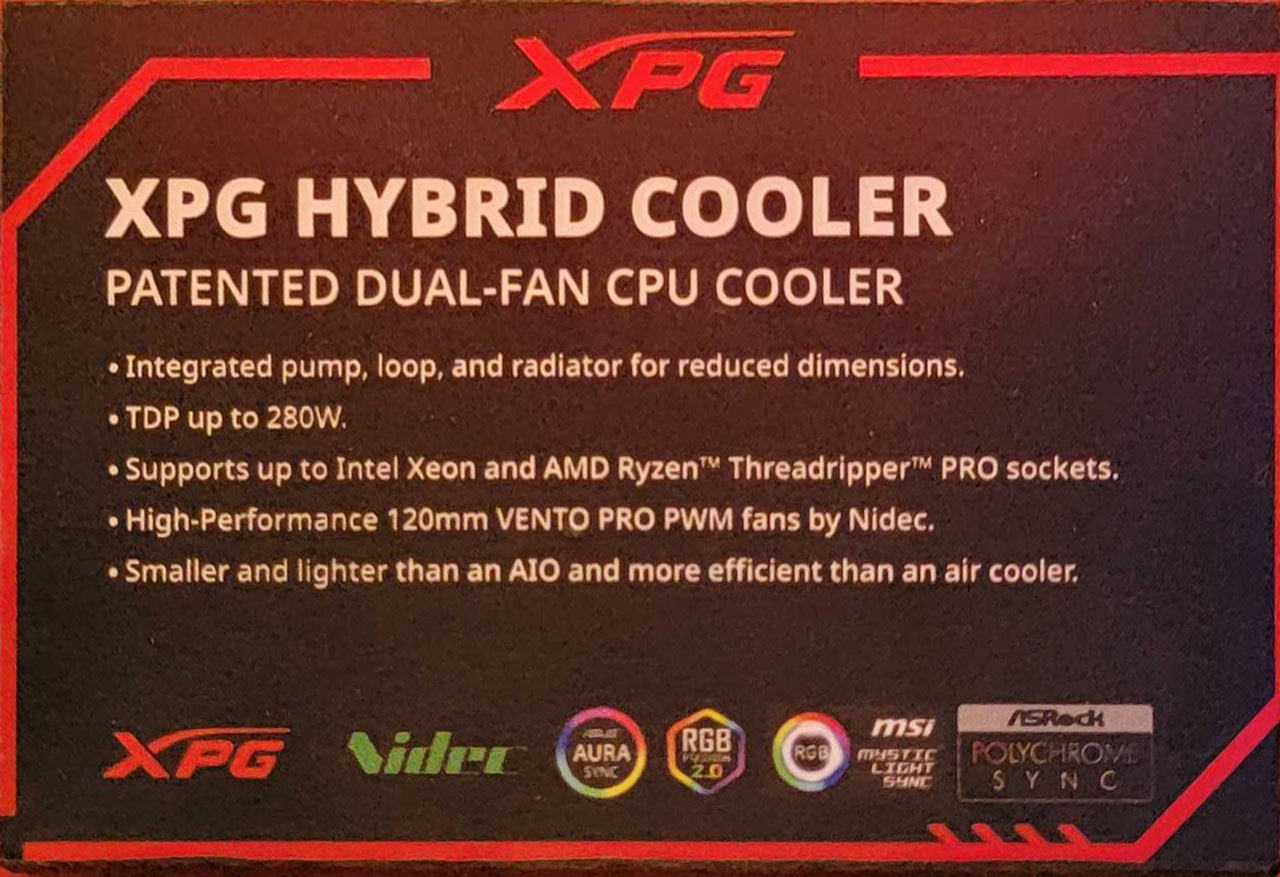


The key features of the XPG Hybrid Cooler seem pretty impressive. As the intro mentions, the firm claims to have condensed 280W of cooling into a moderately sized CPU cooler, lighter than heatpipe-infused twin tower rivals. XPG naturally uses its fans here. Specifically, the central core of the cooler is flanked by Vento Pro 120 PWM spinners. These are 25mm thick and run from 900 to 2,150 RPM in PWM mode for up to 75CFM while keeping the noise levels below 28 dB. Between the two Vento Pro 120 PWM fans, you can see the radiator (also 25mm thick), and we removed the pump/impeller for inspection.
In discussions with the XPG representative at CES 2024, we learned that the XPG Hybrid Cooler, as showcased, remains a work in progress. For example, you can see the various ARGB interface standards listed on the product info card, but lighting has yet to be fully integrated. Moreover, there is talk of adding an LCD panel into the design (probably optional). Lastly, and most importantly to some, the cooling performance isn’t as good as claimed on the info card. We were told that the design is adequate for AMD and Intel mainstream consumer CPUs but isn’t quite up to scratch for Threadripper CPU cooling. This is probably why the XPG Hybrid Cooler is penciled in for a July launch, with several loose ends requiring attention.
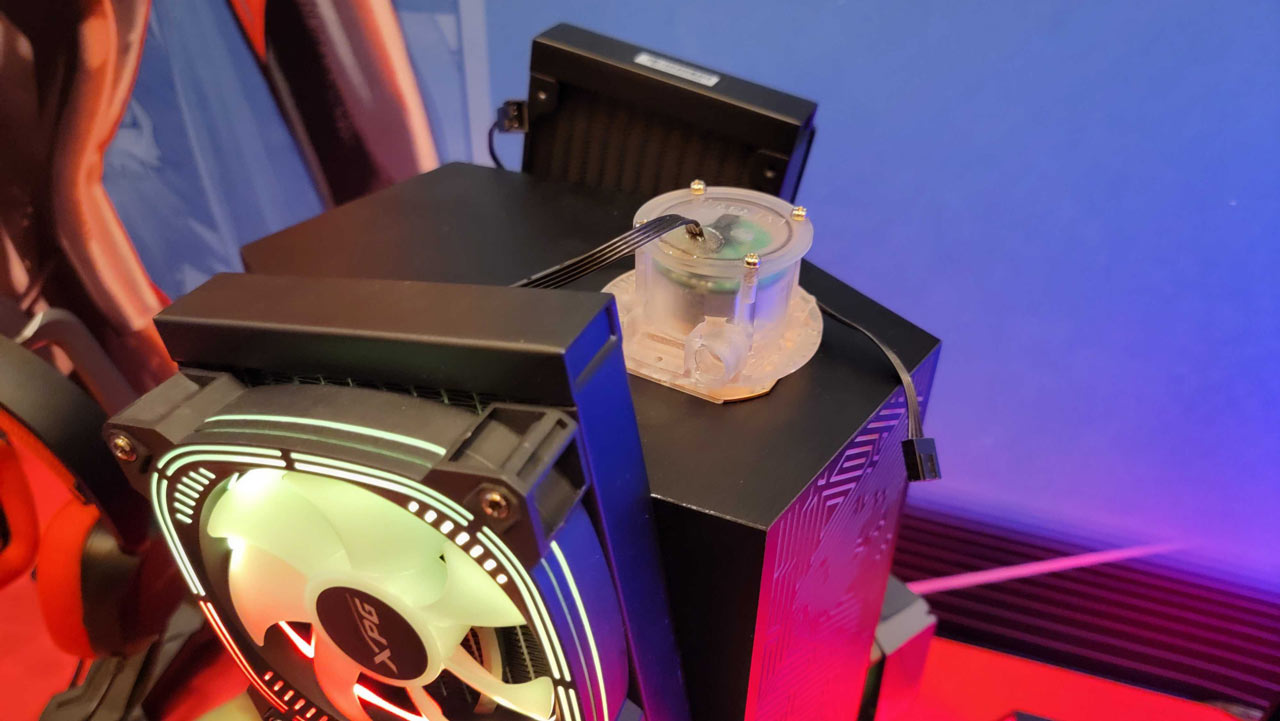
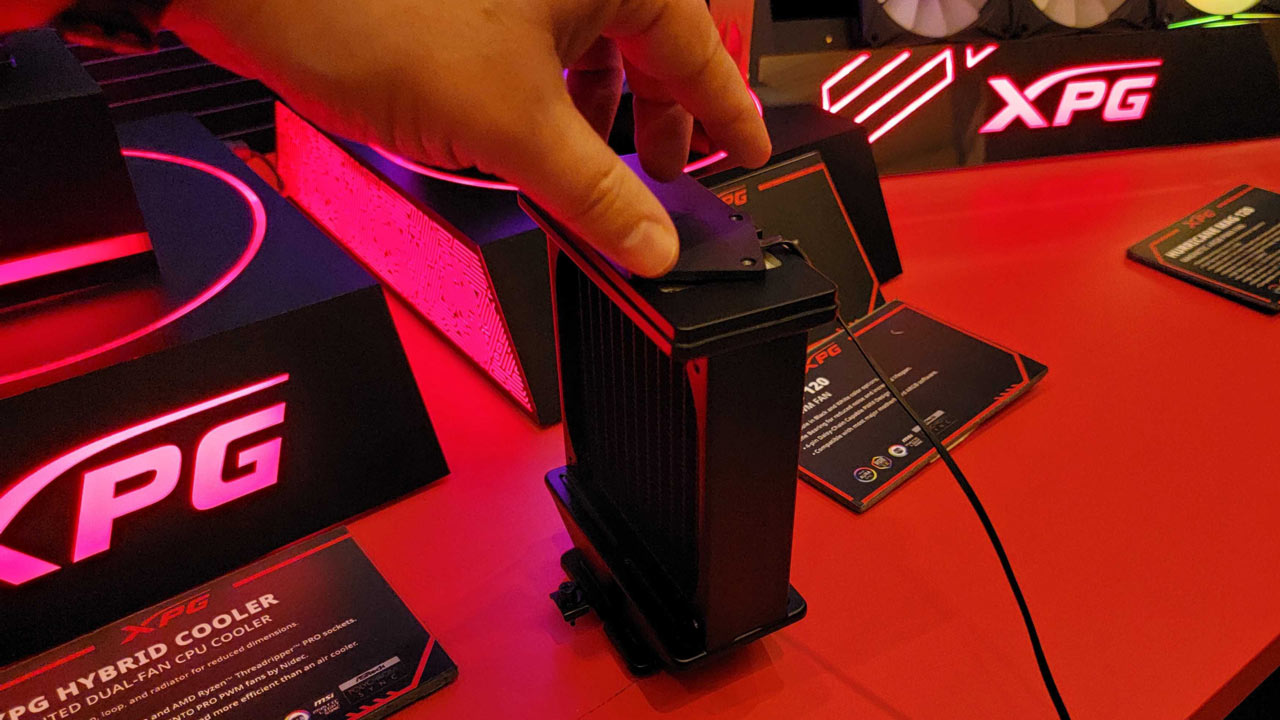

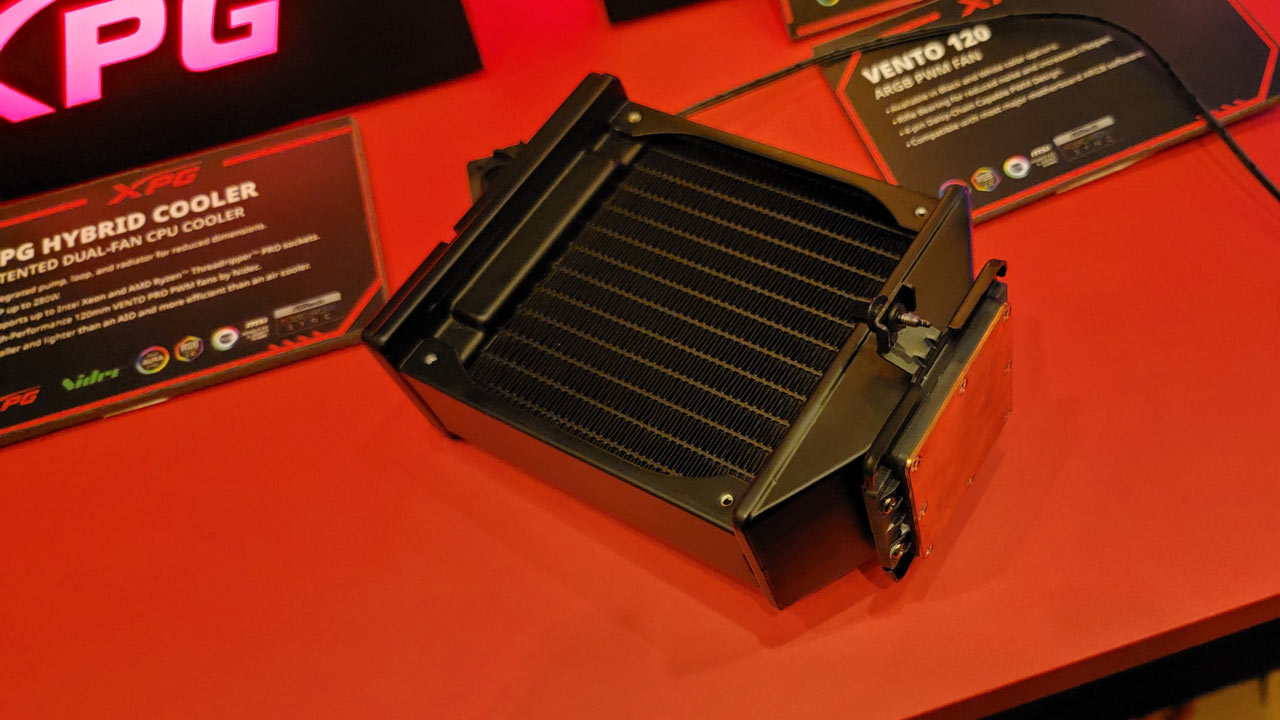
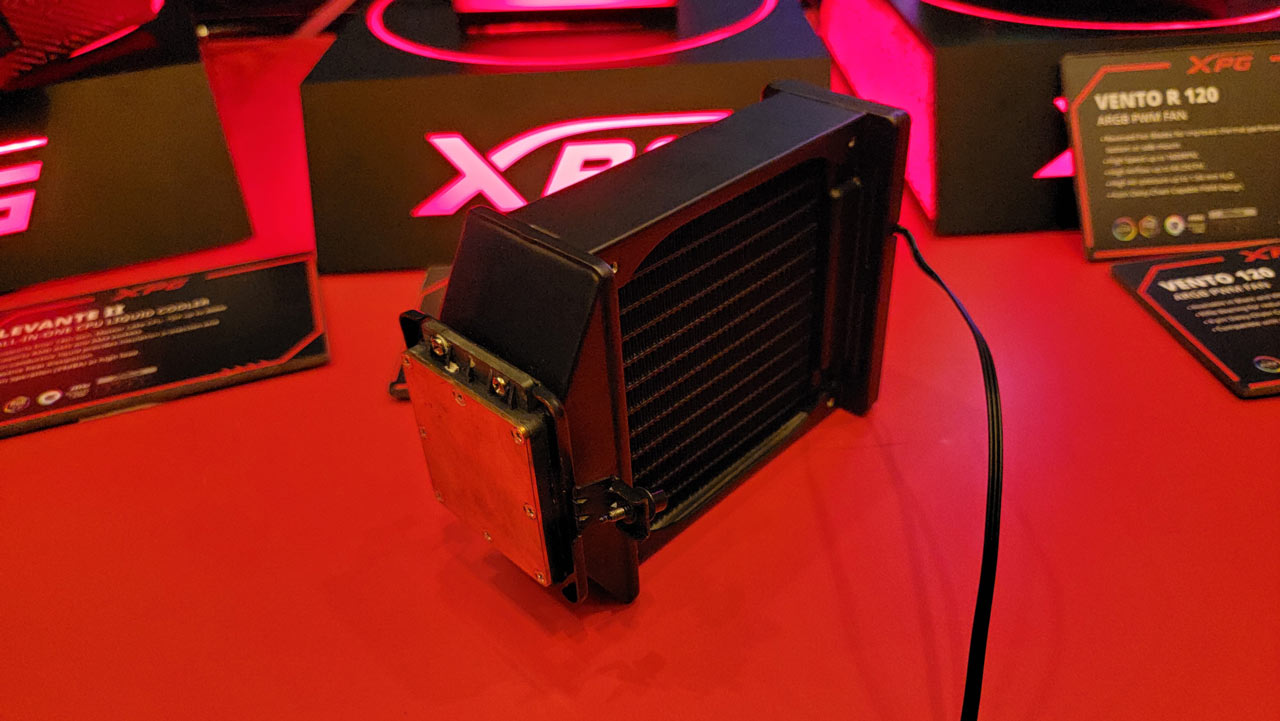
Lastly, with any new CPU cooler design, the proof of the pudding will be in the cooling performance and noise profile it delivers for end-users. Will this self-contained water cooler idea have legs this time around? Perhaps we should know by July after the big Computex show. Given its unique characteristics, it would be good to have another effective high-performance CPU cooling option.
Get Tom's Hardware's best news and in-depth reviews, straight to your inbox.

Mark Tyson is a news editor at Tom's Hardware. He enjoys covering the full breadth of PC tech; from business and semiconductor design to products approaching the edge of reason.
- Paul AlcornEditor-in-Chief
-
hotaru251 kind of better off with a large heatsink (last forever) or an actual 360+ aio at that point.Reply -
Amdlova I have here a tuniq tower 120 have 17 year and still working... some one has a watercooler still working on last 17 years?Reply -
thestryker I'm not totally sure who this is for because it's too big for SFF and isn't as good as an AIO but carries the same hardware failure problem. I do like that they say it's lighter than big dual tower coolers as those are all tipping the scales at ~1100-1600g, but how much lighter who knows. Now it does look completely self contained so permeation shouldn't really be an issue, but pump failure is still a thing. Unless they plan on selling replacement pumps at a reasonable price I'm just not seeing the advantage over going AIO or big air.Reply -
razor512 Seems like a waste, as you are having the worst of both worlds. The size constraints of a tower cooler + the failure points of a liquid cooler. While a liquid cooling loop + radiator makes more efficient use of the surface area of the fins, Making it all in a small size, throws away many of the benefits. At a small size, a CLC is not very efficient in terms of space used, but at a larger size, the space efficiency increases. For example, if you look at some of the older CLCs when they would have a wider ranges of sizes, such as an 80mm, 120mmm, 140mm, 240mm, and 280mm radiator, often the waterblock and pump would be the exact same, thus as the radiator size increased, the space taken up by the pump and waterblock becomes a smaller percentage of the overall space usage.Reply
That device would be better if it were expandable, e.g., connectors on the top half to add in an additional 120mm radiator with a lower fin density for use with the exhaust fan on the case. -
jlake3 More efficient than an air cooler?Reply
While I suppose you might be able to disburse heat around a well designed radiator more evenly than heat pipes can conduct heat out to the edges of a tower cooler, at the end of the day you can only fit so much surface area into in that 120mm square, 25mm deep radiator before it becomes too restrictive.
I've got a 92mm tower cooler on my PC, and it's got what looks like 50mm deep fins. That gives it ~18% more volume than this that a designer could use for either more fins at the same density, or the same amount of fins with less restriction. And this thing is probably going up against 120mm or 140mm tower coolers instead that are even bigger. Even if it does dissipate more heat per cubic centimeter, it just doesn't seem like it's big enough.
Rather than more efficient at the same size, when I think of AIOs I think of moving the heat somewhere else so that you can then throw more flow and more surface area at the problem than a socket mounted cooler would allow. This totally negates that.
This just feels like a 120mm tower cooler with more cost and failure points.